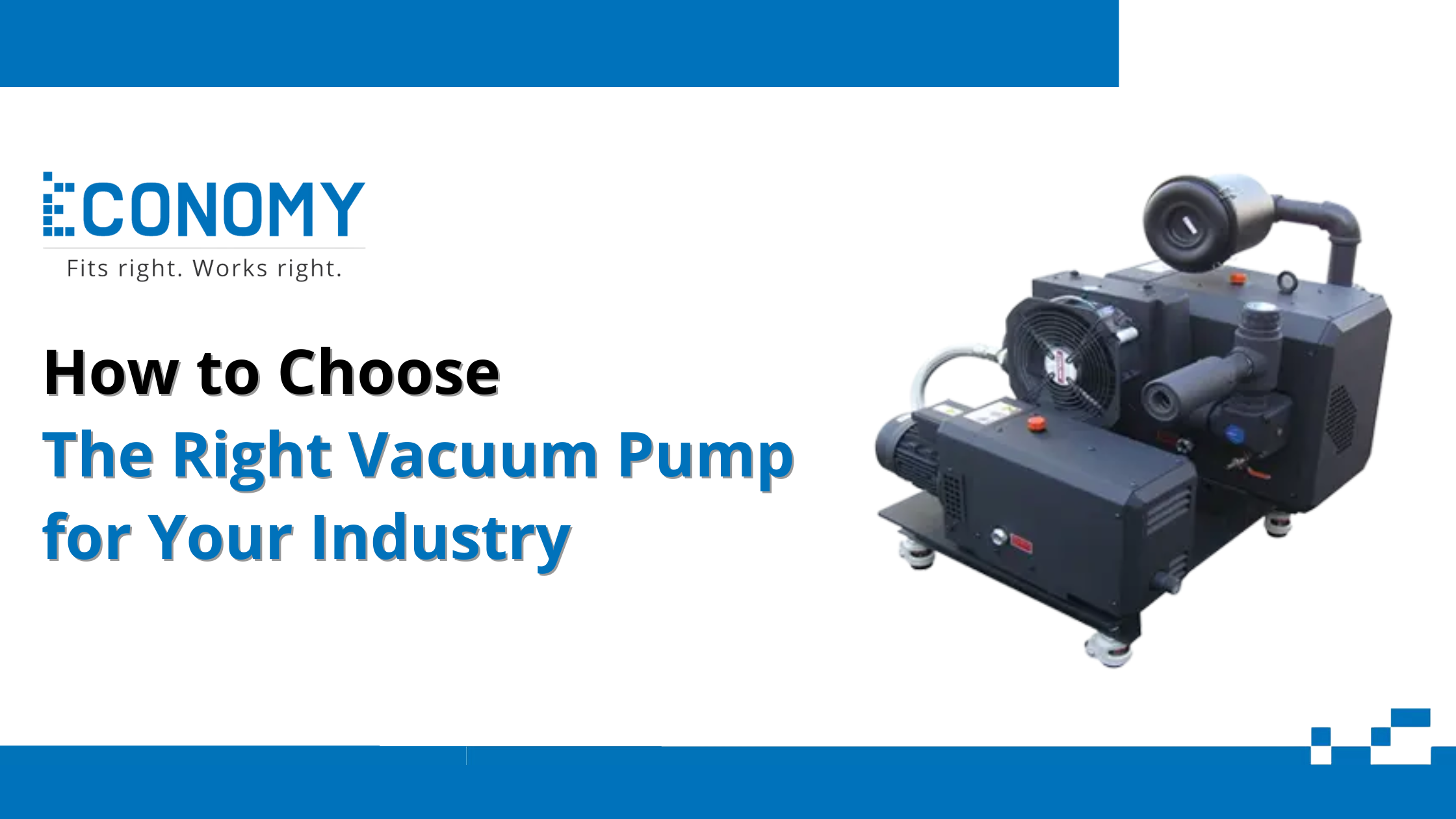
How to Choose the Right Vacuum Pump for Your Industry
Selecting the right vacuum pump is critical to ensuring smooth, efficient, and cost-effective operations across various industries, whether it's pharmaceuticals, food processing, chemicals, or manufacturing. With a wide range of technologies and models available, choosing the wrong vacuum system can lead to inefficiencies, increased downtime, and higher operational costs. Therefore, it's important to approach the decision systematically, considering key factors that align with your process needs.
Factors Influencing Choice of Vacuum Pump
Every industry and application has specific requirements, and several factors come into play when selecting a vacuum pump. These include:
Type of Process: Some processes, like drying or distillation, require deeper vacuum levels, while others, like material handling, may work at rougher vacuum levels.
Desired Vacuum Level: Applications can require low, medium, or high vacuum, and each range typically demands a different type of pump.
Gas Composition: The nature of the gases (inert, corrosive, flammable, or condensable vapors) greatly impacts pump material and design selection.
Throughput: The amount of gas or vapor to be evacuated will determine the pump’s size and pumping speed.
Operating Environment: Ambient temperature, humidity, and presence of dust or contaminants influence pump design and auxiliary requirements.
Recognizing these factors upfront allows you to create a clear specification before starting your selection process.
Major Factors to Consider While Picking a Vacuum System
When diving deeper into the choice, several major technical and practical considerations must be kept in mind:
Vacuum Level and Pumping Speed
Ensure the pump can achieve and sustain the vacuum level your process requires.
Also, consider the speed of evacuation (how quickly the vacuum must be reached) because a mismatch can cause production delays.
Process Gas Compatibility
Choose materials that resist corrosion if handling aggressive chemicals.
Pumps with oil-free designs, like dry screw or scroll pumps, are preferred in sensitive applications like semiconductors or pharmaceuticals.
Contamination Risks
Some processes can back-stream oils or vapors into the system, contaminating the product. Opt for oil-free or specialized pumps if contamination is a concern.
Maintenance Requirements
Simpler designs typically mean lower maintenance and quicker servicing.
Check the availability of service centers and spare parts, especially if you're operating in a remote location.
Energy Efficiency
Energy costs can be significant over the pump’s lifetime. Variable speed drives and energy-saving technologies can offer long-term savings.
Compliance and Standards
Industries like food, pharma, and electronics may require pumps compliant with specific standards such as GMP, FDA, or ISO certifications.
Tips to Align a Vacuum System with the Industry
To ensure your vacuum system seamlessly integrates with your industry needs:
Pharmaceutical Industry: Opt for clean, oil-free vacuum pumps with high chemical resistance and compliance with hygiene standards.
Food and Beverage: Choose pumps that are easy to sanitize, resistant to moisture, and designed for high uptime to meet production cycles.
Chemical Processing: Prioritize corrosion-resistant models with robust designs to handle aggressive chemicals and vapors.
Manufacturing: Focus on rugged pumps that offer high reliability with minimal maintenance to support high-volume production lines.
Research and Laboratory: Go for pumps with precise control, low vibration, and quiet operation for sensitive experiments and measurements.
Always consult with your process engineers and vacuum specialists to customize solutions for your specific application. Sometimes, combining different types of pumps in a staged system delivers the best results.
Common Pitfalls to Avoid
Even experienced professionals sometimes overlook critical elements during pump selection, leading to costly mistakes. Here are common pitfalls to watch out for:
Ignoring Compatibility with Processes
One of the biggest mistakes is failing to match the pump materials and design to the process gases and vapors. Using an incompatible pump can cause rapid corrosion, contamination, reduced efficiency, and frequent breakdowns. Always consider the complete chemical and physical profile of your process environment.
Ignoring Maintenance and Durability Features
Vacuum pumps are not just purchase-and-forget equipment. Regular servicing, part replacement, and occasional repairs are part of their lifecycle. Choosing a pump without assessing its ease of maintenance, service intervals, and availability of parts can lead to costly downtime. Also, evaluate how durable the pump is under continuous operation, especially if 24/7 usage is expected.
Ignoring Pump Size
Choosing a pump that's either too small or too large for your application can lead to inefficiencies. A pump too small may not achieve the necessary vacuum levels, while an oversized pump can be unnecessarily expensive, energy-intensive, and harder to control precisely. Always calculate the required throughput, vacuum levels, and system volume before sizing the pump.
Conclusion
How to choose a vacuum pump is a critical decision that impacts your process performance, operational costs, and equipment longevity. By carefully evaluating your specific process needs, considering maintenance and durability aspects, and avoiding common mistakes, you can ensure that the vacuum system you invest in will serve your industry efficiently for years to come.



